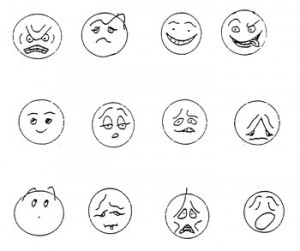 Very often in the course of teaching a class I mention that the practice is meant to be sensational. We are there to feel the body while it is working and playing. But we are not necessarily meant to feel it two hours later. This can sometimes be hard for people to process—especially if someone is in pain.
Very often in the course of teaching a class I mention that the practice is meant to be sensational. We are there to feel the body while it is working and playing. But we are not necessarily meant to feel it two hours later. This can sometimes be hard for people to process—especially if someone is in pain.
Psoas Release Party!
Over the weekend I taught two Psoas Release Party! workshops, which many years later, is still my favorite workshop to offer. The first half is lecture but the second half involves doing release exercises that, while not hard work, can be fairly intense. Most people who attend this workshop have some issue that they are dealing with and I have to assure the participants that no matter what they are feeling during the exercise portion of the event, they will most likely feel better later that day and the next morning.
It is always so gratifying when I receive emails the next day corroborating what I said during the workshop. Most people do feel better later but in the middle of the experience it can be pretty intense.
When I teach core work to someone with back pain a great deal of fear often comes up. People don’t know what they are meant to feel in terms of exercising to get out of pain and often equate any sensation with their injury. Feeling your back working isn’t a problem for me if what is felt in the moment doesn’t linger beyond the session.
There are two simple distinctions that I make when it comes to what we feel in an exercise. We do want to feel our muscles and we don’t want to feel our ligaments, tendons, joints or bones. All injuries are different. There are muscle injuries that are served by stretching as a means to heal them but sometimes it is hard to know if what you are feeling is actually the muscle that is stretching or its tendon.
To use the hamstrings as an example, people often experience hamstring injuries where the muscle inserts onto the base of the pelvis. In this case you might be feeling the injury to the hamstring not in the muscle but in the tendon that connects it to the bone. If you are feeling the sensation in the meat, or middle, of the muscle you can possibly work out of this injury but feeling it in the tendon can be counter-productive.
In cases of lower back problems when I ask someone to engage their abdominals they often report feeling pain. It is important to analyze exactly what the feeling is. Sometimes the sensation is muscles that are not used to working getting recruited in a good way. I never have a problem with that though the person doing the exercise often does—being in pain is scary and can put us on high alert making every feeling into a warning sign.
To that end I often counsel that while you want to feel stuff in the course of a yoga class or workout, you don’t necessarily want to feel it two or three hours later. When developing new muscles it is fine to feel sore after working out but once that muscle is awake and active, using it should no longer result in soreness.
Trying to discern what are good, and bad, sensations on the road to development and recovery is a large part of the journey and by no means the easiest part.
